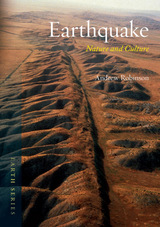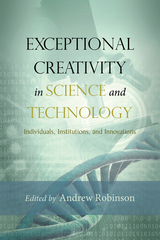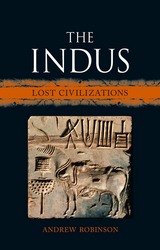3 books about Robinson, Andrew

Earthquake
Nature and Culture
Andrew Robinson
Reaktion Books, 2012
The 2011 devastating, tsunami-triggering quake off the coast of Japan and 2010’s horrifying destruction in Haiti reinforce the fact that large cities in every continent are at risk from earthquakes. Quakes threaten Los Angeles, Beijing, Cairo, Delhi, Singapore, and many more cities, and despite advances in earthquake science and engineering and improved disaster preparedness by governments and international aid agencies, they continue to cause immense loss of life and property damage.
Earthquake explores the occurrence of major earthquakes around the world, their effects on the societies where they strike, and the other catastrophes they cause, from landslides and fires to floods and tsunamis. Examining the science involved in measuring and explaining earthquakes, Andrew Robinson looks at our attempts to design against their consequences and the possibility of having the ability to predict them one day. Robinson also delves into the ways nations have mythologized earthquakes through religion and the arts—Norse mythology explained earthquakes as the violent struggling of the god Loki as he was punished for murdering another god, the ancient Greeks believed Poseidon caused earthquakes whenever he was in a bad mood or wanted to punish people, and Japanese mythology states that Namazu, a giant catfish, triggers quakes when he thrashes around. He discusses the portrayal of earthquakes in popular culture, where authors and filmmakers often use the memory of cities laid to waste—such as Kobe, Japan, in 1995 or San Francisco in 1906—or imagine the hypothetical “Big One,” the earthquake expected someday out of California’s San Andreas Fault.
With tremors happening in seemingly implausible places like Chicago and Washington DC, Earthquake is a timely book that will enrich earthquake scholarship and enlighten anyone interested in these ruinous natural disasters.
[more]

Exceptional Creativity in Science and Technology
Individuals, Institutions, and Innovations
Andrew Robinson
Templeton Press, 2013
In the evolution of science and technology, laws governing exceptional creativity and innovation have yet to be discovered. In his influential study The Structure of Scientific Revolutions, the historian Thomas Kuhn noted that the final stage in a scientific breakthrough such as Albert Einstein’s theory of relativity—the most crucial step—was “inscrutable.” The same is still true half a century later.
Yet, there has been considerable progress in understanding many stages and facets of exceptional creativity and innovation. In Exceptional Creativity in Science and Technology, editor Andrew Robinson gathers diverse contributors to explore this progress. This new collection arises from a symposium with the same title held at the Institute for Advanced Study (IAS) in Princeton. Organized by the John Templeton Foundation, the symposium had the late distinguished doctor and geneticist Baruch S. Blumberg as its chair. At the same time, its IAS host was the well-known physicist Freeman J. Dyson—both of whom have contributed chapters to the book. In addition to scientists, engineers, and an inventor, the book’s fifteen contributors include an economist, entrepreneurs, historians, and sociologists, all working at leading institutions, including Bell Laboratories, Microsoft Research, Oxford University, Princeton University, and Stanford University. Each contributor brings a unique perspective to the relationships between exceptional scientific creativity and innovation by individuals and institutions.
The diverse list of disciplines covered, the high-profile contributors (including two Nobel laureates), and their fascinating insights into this overarching question—how exactly do we make breakthroughs?—will make this collection of interest to anyone involved with the creative process in any context. Still, it will especially appeal to readers in scientific and technological fields.
[more]

The Indus
Lost Civilizations
Andrew Robinson
Reaktion Books, 2015
The Indus civilization flourished for half a millennium from about 2600 to 1900 BCE, when it mysteriously declined and vanished from view. It remained invisible for almost four thousand years, until its ruins were discovered in the 1920s by British and Indian archaeologists. Today, after almost a century of excavation, it is regarded as the beginning of Indian civilization and possibly the origin of Hinduism. The Indus: Lost Civilizations is an accessible introduction to every significant aspect of an extraordinary and tantalizing “lost” civilization, which combined artistic excellence, technological sophistication, and economic vigor with social egalitarianism, political freedom, and religious moderation. The book also discusses the vital legacy of the Indus civilization in India and Pakistan today.
[more]
READERS
Browse our collection.
PUBLISHERS
See BiblioVault's publisher services.
STUDENT SERVICES
Files for college accessibility offices.
UChicago Accessibility Resources
home | accessibility | search | about | contact us
BiblioVault ® 2001 - 2024
The University of Chicago Press









